.png.transform/rendition-xs/image_image%20(1).png)
The Jumilla Wine Route: The Domain of The Monastrell Grape Variety
Although strictly speaking the Jumilla Wine Route focuses on this particular town in Murcia and its surroundings, the appellation which gives the route its name also covers another six municipalities in the neighbouring province of Albacete. The characteristics of the soil and climate, common to all the regions under DO Jumilla, are ultimately what have given rise to a wine region whose irrefutable trademark is the Monastrell grape variety
The region has been a crossroads between Andalucía, La Mancha and Valencia since time immemorial, and lies on a high plain at an altitude of 400 to 900 metres above sea-level, which, geographically speaking, represents the transition between the Castilian plateau and the Mediterranean Eastern Seaboard. Its predominantly limestone soils are poor in organic material, while the climate is dry with around 300mm of annual rainfall and more than 3,000 hours of sunlight. Winters are cold with frequent frosts while summers are very hot and dry. All of which constitutes ideal conditions for the growth of a very special grape variety, Monastrell, the region’s native strain, which occupies more than 80 per cent of the appellation’s total vineyard land área.
Monastrell— known internationally as Mourvèdre — is a low-yield, small-berry, thick-skinned strain, with compact grape-clusters. This variety produces potent, expressive wines, with a characteristic purplish colour and abundant fruity aromas. Rich and mellow in the mouth, these wines boast an average ABV of 12 to 14%. Since the implementation of modern winemaking methods with the aim of reducing oxidation, in the mid-90s, the wines made under DO Jumilla have taken a spectacular leap of quality and elegance, and now form part of the select group of Spanish wines which have scored high marks in international competitions and wine guides. Of the more than 40 million litres of wine produced per campaign, a third is targeted at export to around 30 countries.
National e international grapes complete the Monastrell empire
The types of wines currently made in the region are: smooth, full-bodied young wines; the so-called, and highly appreciated, ‘semi-crianzas’ or young oak-aged wines, which are aged for around six months; sweet wines, and of course Crianzas and Reservas, which express the concentration of the Monastrell grape variety to the full.
Other authorised red grape varieties are Garnacha, Garnacha Tintorera and Cencibel (Tempranillo), which together with Monastrell, give rise to excellent, very fruity, vivacious and fresh rosés, made using a short maceration process involving the grape pulp and skins. In recent times, the use of international red grape varieties has also been approved such as Cabernet Sauvignon, Merlot, Petit Verdot and Syrah, which have adapted well to the region. And in white wines, which are aromatic and balanced in the mouth, the following varieties are used: Airén, Pedro Ximénez, Malvasía, Chardonnay, Sauvignon Blanc, small-grain Moscatel (Muscat) and Macabeo.
A rich and peculiar local cuisine joins the visitors
Jumilla and its Wine Route cover more than half of the 42,000 hectares of vineyards registered in the region (of which 30,000 are endorsed by the appellation), in their majority planted with red grape varieties. A total of 12 bodegas make up the Wine Route —BSI (Bodegas San Isidro), Bleda, Bodegas Carchelo, Casa de la Ermita, Hacienda del Carche, Luzón, Silvano García, Viña Campanero, Viña Elena, Xenysel, Alceño and Pio del Ramo—, some of which have received prolific domestic and international recognition. All offer tours of their bodegas as well as other activities which aim to delve into the secrets of the art of winemaking.
In addition to the region’s bodegas, the Jumilla Wine Route also includes the Jumilla Town Hall, the appellation’s Regulating Council, one organic oil mill plant (Almazara Casa Pareja) and a score of restaurants, hotels, specialised outlets, and travel agents. Another of the delights which can be enjoyed by visitors, as well as the wines, is the rich local cuisine. The most well-known local dish is ‘Gazpacho Jumillano’, a traditional Jewish preparation made with game meat; other typical recipes are ‘Rice and Rabbit’, ‘Relleno’ or ‘Pelotas’ (poultry meatballs) and the delicious ‘Fried Goat Kid’. Other highly appreciated fare includes ‘Fried Cheese and Tomato’, ‘Mortirigüelo’ a broth made with offal, ‘Trigoentero’ a traditional Easter vegetable broth, and ‘Gachamiga’ a simple winter meal made with basic ingredients. The region’s most famous desserts are ‘Sequillos’ sweet pastry decorated with meringue, ‘Pirusas’ made with aniseed, ‘Cristóbalas’ made with almonds and cinnamon, and ‘Rollos de Vino’ made with wine as the name implies, all of which go down very well with a sweet Monastrell wine.
Jumilla, the town which the Arabs called ‘La Bella’
Jumilla’s winemaking tradition is documented as far back as the Romanisation of the Iberian Peninsula, although the remains of vines cultivated 5,000 years ago have also been found in archaeological excavations. Jumilla has always been an intersection of roads as well as cultures, and as a result historic and artistic traces from numerous Mediterranean civilizations can be found here. The town which the Arabs called ‘La Bella’ is a network of narrow streets and houses decorated with coats of arms, crowned by an impressive 15th century castle, the emblem of the town and the Wine Route.
Other attractions in Jumilla are the Church of Santiago, a Spanish National Monument which boasts a magnificent 16th century altarpiece; the Jerónimo Molina Archaeological Museum; the so-called ‘Casón’, a perfectly preserved late-Roman 5th century mausoleum; the Franciscan convent of Santa Ana del Monte; and the Iberian settlement of Coimbra del Barranco Ancho in the Sierra de Santa Ana; as well as the cave paintings and fossilised footprints found in the Sierra de la Pedrera. A special mention has to be given also to the region’s Easter celebrations; officially declared of ‘National Interest to Tourism’ and backed by more than four centuries of tradition.
Hang gliding, paragliding and rock climbing between the vines
On top of the numerous activities and festivities associated with wine which the Route offers visitors throughout the year, also important to bear in mind is that the town of Jumilla is surrounded by a series of mountain ranges which boast a wealth of nature as well as picturesque landscapes — one of the most outstanding being the Sierra del Carche Regional Park — where enthusiasts can practice hang gliding, paragliding, rock climbing, caving and cycling, as well as being able to hike along one of Spain’s long-distance footpaths, the ‘GR7’, which starts in the north of Spain and crosses the whole of the Eastern Seaboard.
Both within and outside the town centre, the activities and tours to places of interest are organised in a series of routes which make visits easy for all those with the desire to delve deeper into the domain of the Monastrell grape variety.
The region has been a crossroads between Andalucía, La Mancha and Valencia since time immemorial, and lies on a high plain at an altitude of 400 to 900 metres above sea-level, which, geographically speaking, represents the transition between the Castilian plateau and the Mediterranean Eastern Seaboard
Wines from Spain/©ICEX
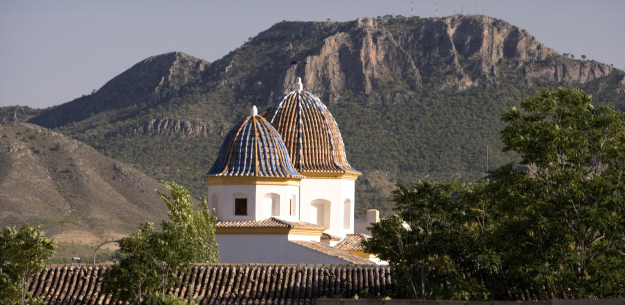
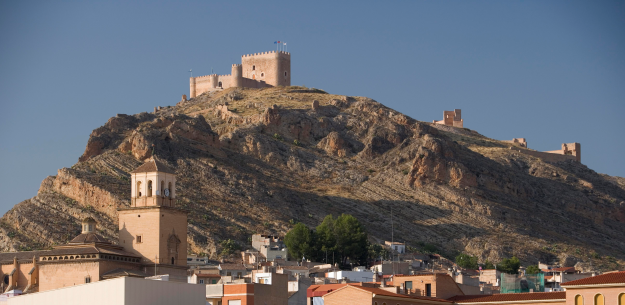
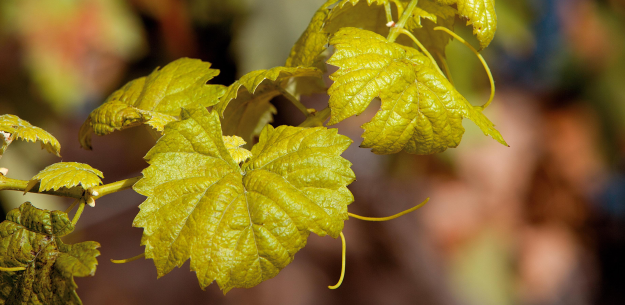
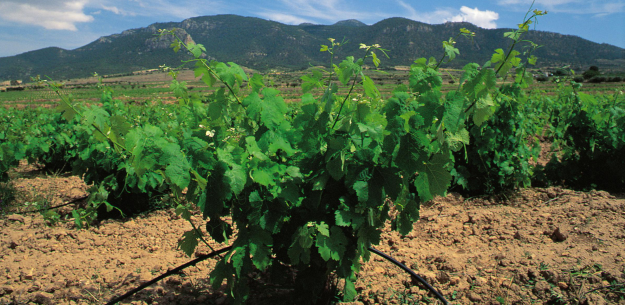
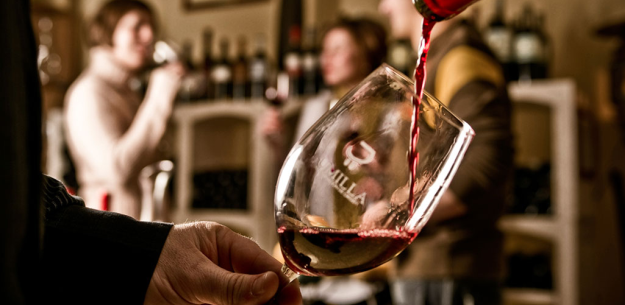
- Jumilla
- Jumilla
- Jumilla
- Jumilla
- Jumilla

